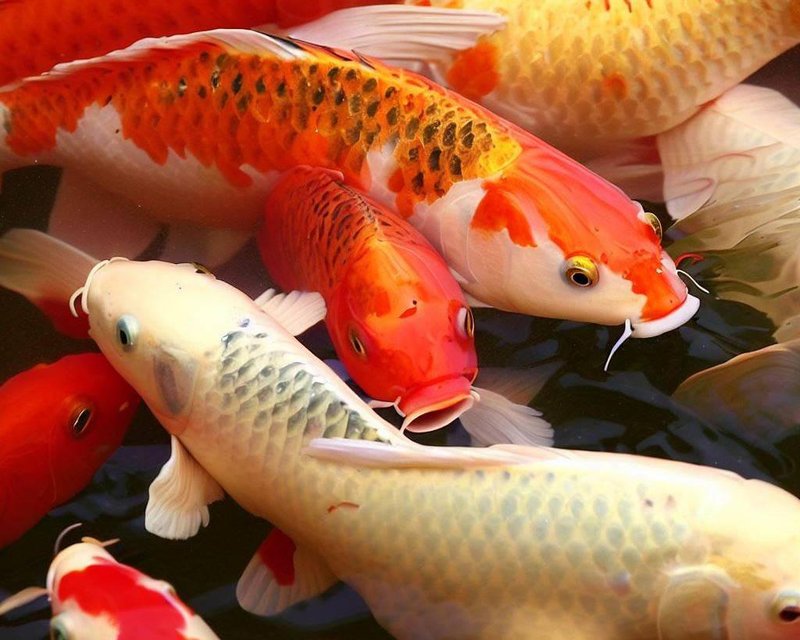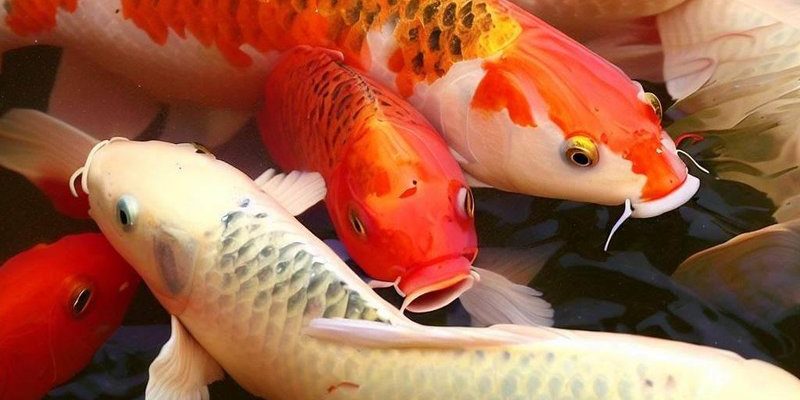
Now, you might be wondering why these factors are so important. Well, koi are sensitive creatures, and the right conditions can make all the difference in their health and happiness. Picture it as a delicate balance of nature; too much of one thing or too little of another can lead to stress or even illness. Let’s dive into the nitty-gritty of creating the perfect pond for your koi.
Understanding Koi Temperature Needs
When it comes to koi, temperature is crucial. These fish thrive in water that’s between 65°F and 75°F (about 18°C to 24°C). Going outside this range can impact their health. Here’s the thing: if the water gets too cold, koi become sluggish and less active. On the other hand, if it gets too warm, they can become stressed and more susceptible to disease.
You might be wondering how to maintain this ideal temperature. Using a pond heater in the winter can help, while a pond chiller might be necessary in the summer. It’s also a good idea to keep an eye on the daily fluctuations—too much change can be hard on your fish. Just like you wouldn’t want a sudden heatwave or cold snap during your vacation, your koi don’t appreciate abrupt temperature changes either.
The Importance of Pond Depth
Next up is depth, which plays a significant role in keeping your koi safe and comfortable. Ideally, your pond should be at least 3 to 4 feet deep. This depth protects koi from predators and allows them to find a cooler area when the sun is blazing down. Think of it as a cozy hideout where your fish can retreat when they need a break from the heat.
But there’s more to consider here. A deeper pond also helps in maintaining a steadier water temperature, as deeper water tends to experience less fluctuation. It also provides space for beneficial bacteria, which play a vital role in keeping your pond water clean. So, while you see those koi gliding gracefully near the surface, rest assured they have plenty of room to dive below when necessary.
Filtration Systems: Keeping the Water Clean
No one enjoys swimming in dirty water, and neither do koi. A good filtration system is essential for maintaining pond hygiene. It’s the heart of your pond’s ecosystem, helping to remove debris, excess nutrients, and harmful bacteria. When choosing a filtration system, consider the size of your pond and the number of koi you have. A common guideline is that you need a filter that can turn over the entire pond water at least once every two hours.
Now, you might be thinking, “How do I pick the right filter?” Look for one that includes both mechanical and biological filtration. Mechanical filters catch larger particles, while biological filters encourage the growth of beneficial bacteria that break down waste. This partnership helps keep your water sparkling clean and provides a safe environment for your koi to thrive.
Balancing pH Levels for Healthier Koi
You may not think about pH levels much in your daily life, but for koi, it’s a big deal. The ideal pH for koi ponds is between 7.0 and 8.0. If it swings too low or too high, your fish can experience stress, leading to health issues. Koi are especially sensitive to drastic changes, so keeping a consistent pH is key.
To maintain this balance, you can test your water regularly using a simple pH kit. If the levels need adjustment, you can add products designed to raise or lower pH safely. It’s like adding the right spices to your cooking—too much or too little can ruin the dish.
Oxygen Levels: Keeping It Fresh
Koi need oxygen-rich water to thrive. As they swim around, they consume oxygen and filter out waste. If the oxygen levels drop too low, your koi can become lethargic or even sick. Aim to keep dissolved oxygen levels above 6 mg/L for optimal health.
Aeration is essential here. You can achieve this through various means, like surface agitation or using air stones. Some people opt for a simple fountain or waterfall, which not only looks beautiful but also adds that much-needed oxygen. Just picture a gentle waterfall as your koi swim below—refreshing, isn’t it?
Seasonal Changes: Preparing for the Unexpected
Koi care doesn’t stop when the seasons change. Each season brings its own challenges that can affect your pond conditions. In the colder months, you’ll want to ensure your pond doesn’t freeze completely. Having a pond heater or maintaining a small hole in the ice for gas exchange can work wonders.
In the warmer months, be on the lookout for algae blooms, which can quickly take over if conditions are right. Regular maintenance, like cleaning your filter and checking water quality, ensures your koi stay healthy year-round. Think of it like seasonal home maintenance; just as you’d prepare your home for winter, make sure your pond is set for the changing seasons too.
In summary, providing ideal pond conditions for koi involves a careful balance of temperature, depth, filtration, pH levels, oxygen, and seasonal adjustments. It might sound like a lot, but once you get the hang of it, it becomes second nature. Your koi will reward your efforts with beauty and grace, turning your pond into a serene oasis.
Remember, creating a thriving environment isn’t just about the fish; it’s about nurturing a little piece of nature right in your backyard. So grab a cup of coffee and enjoy the journey as you watch your koi flourish!

